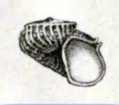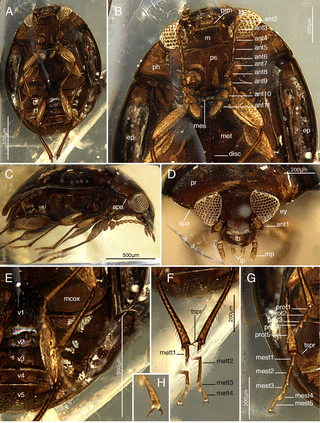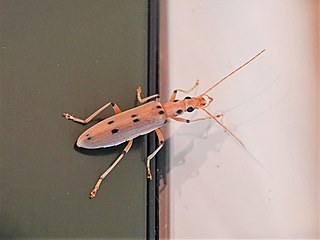
Chalinolobus is a genus of bats, commonly known as pied, wattled, or long-tailed bats. They have fleshy lobes at the bottom edge of their ears and on their lower lips. The bats otherwise classified in the genus Glauconycteris are included in Chalinolobus by some zoologists.

Tellina is a widely distributed genus of marine bivalve molluscs, in the family Tellinidae.
Bythaelurus is a genus of deep-water catsharks and part of the family Scyliorhinidae. The genus Bythaelurus Compagno 1988 was first described as a subgenus of Halaelurus Gill 1862 based on several morphological characteristics including a soft body with thin skin, a bluntly rounded snout without a pointed, knob-like tip, and eyes not noticeably elevated on the dorsal surface of the head. Members of this genus are generally found in deep water and have more somber body coloration.

Scissurellidae, sometimes known by the common name little slit snails, are a taxonomic family of minute sea snails, marine gastropod molluscs or micromolluscs in the clade Vetigastropoda.

Diamesinae is a subfamily of midges in the non-biting midge family (Chironomidae).
William B. "Bill" Rudman is a malacologist from New Zealand and Australia. In particular he studies sea slugs, opisthobranch gastropod molluscs, and has named many species of nudibranchs.
Talpanas lippa, the Kauaʻi mole duck, is an extinct species of duck. It was first described by Andrew N. Iwaniuk, Storrs L. Olson, and Helen F. James in the journal Zootaxa in November 2009. It is the only known member of the genus Talpanas. It was endemic to the Hawaiian island of Kauai where the fossil remains were unearthed in the Makauwahi Cave, Maha‘ulepu. The archaeological association of the bones is about 6000 years BP.
Recilia is a genus of typical leafhoppers in the family Cicadellidae. There are about four described species in Recilia.
Miotadorna is a genus of extinct tadornine ducks from the Miocene of New Zealand. It contains two species, M. sanctibathansi, and M. catrionae.
Parakonarus kopure is a species of tanaidomorphan malacostracan crustacean found in New Zealand.
Atemtanais taikaha is a species of tanaidomorphan malacostracan crustacean found in New Zealand.
Paratanais tara is a species of tanaidomorphan malacostracan crustacean found in New Zealand.
Paratanais paraoa is a species of tanaidomorphan malacostracan crustacean found in New Zealand.
Araphura whakarakaia is a species of tanaidomorphan malacostracan crustacean found in New Zealand. They rely on drag-powered swimming to move around, and like most species of crustacean, they live in the benthic zone.
Tanaopsis rawhitia is a species of tanaidomorphan malacostracan crustacean found in New Zealand.

Cyclaxyridae are a family of beetles in the superfamily Cucujoidea. The only living genus is Cyclaxyra, with two species endemic to New Zealand. Other species have been named from fossils. They are also known as sooty mould beetles due to the association of Cyclaxyra with sooty mould. The extant species are mycophagous, feeding on spores, conidia, and hyphae.

Araphura is a genus of malacostracan crustacean found in New Zealand.

Parisopalpus is a genus of false blister beetles in the family Oedemeridae. The genus was first identified by Logan Hudson in 1975, who separated the group from Sessinia due to the presence of bifid mandibles, and n males of the species visible genitalia.






